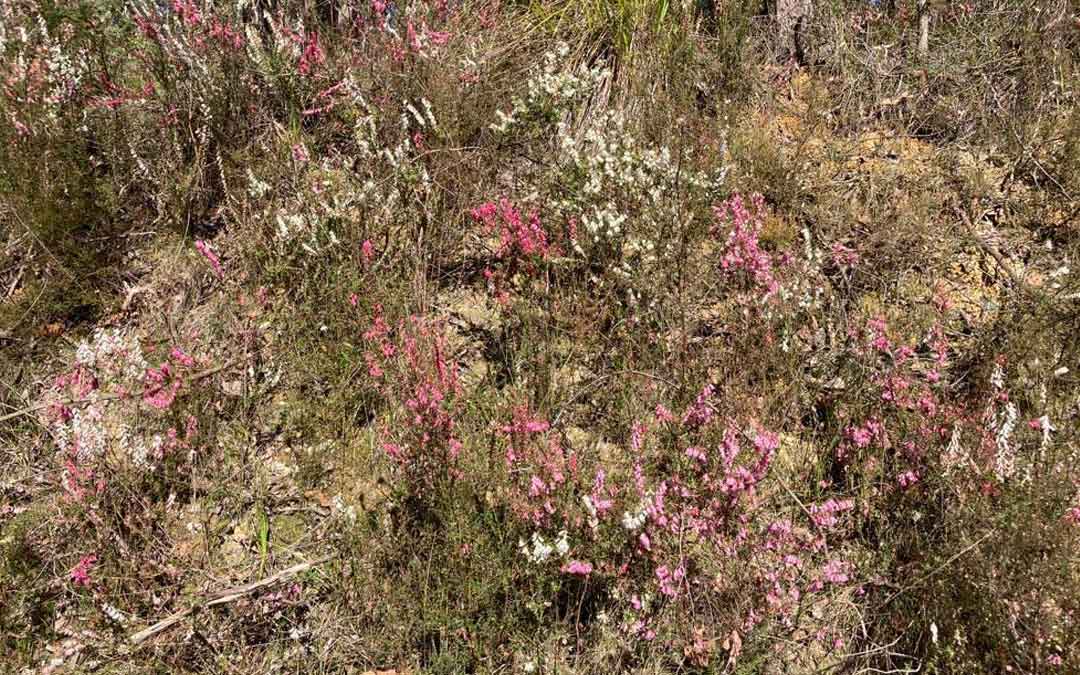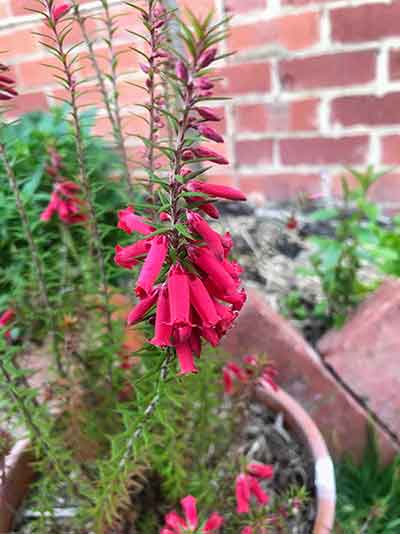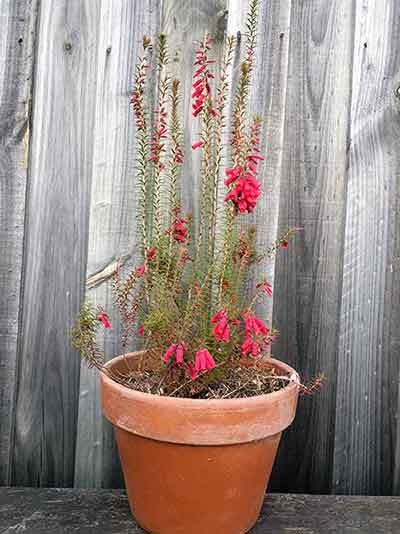A pink, red and white spring show

Take a drive to many places in Victoria at the moment and you’re likely to see our state’s floral emblem in all of its splendour. But did you know it grows exceptionally well as a pot plant or planted directly into your garden?
The Common heath (Epacris impressa) is an understated name for a truly stunning plant. Covered in deep or pale pink, white or red tubular flowers, these upright shrubs (to roughly 1 metre tall) are a worthy addition to any garden. Their spiky leaves are very prickly and provide great habitat for small birds that will come and feed on the nectar. They are also both caterpillar and butterfly-attracting.
Part of a huge worldwide Ericaceae family, this heath should not be confused with other varieties, such as the visually similar but invasive Spanish heath.
Propagating Common heath is difficult and slow. Seed is almost dust-like and is hard to collect. Between harvesting and sowing the seed, it should be stored for 3-4 months in a dry, dark and cool place. Fresh seed is much more likely to successfully germinate. Seed germination takes between 2 months and 2 years – if it even successfully germinates! Stem cuttings (taken in autumn) will take 9-10 months to grow roots. Extreme care needs to be taken when pricking seedlings or cuttings out, as they have very fine delicate roots that are easily snapped off.
I have one growing in a pot in my garden, but recently (last weekend of August) saw these stunning displays on the side of the road in Castella (near Kinglake). Flower timing is variable depending on location, but I’ve found mine flowers in late winter.
If you’d like one for your garden, I suggest trying one in a pot first. They prefer sunny to partly-shaded spots and an open, slightly acidic potting mix that drains well. A light prune after flowering will help them keep a more attractive shape. If planting into the ground, make sure it’s in a well-drained position and not somewhere you need to brush past – the leaves are really spiky.
Common health is not a particularly long-lived plant, but this is the third year I’ve had this beauty and it’s getting more and more beautiful I think.


Written by Jen Willis
Photos by Cathy Willis and Jen Willis.
